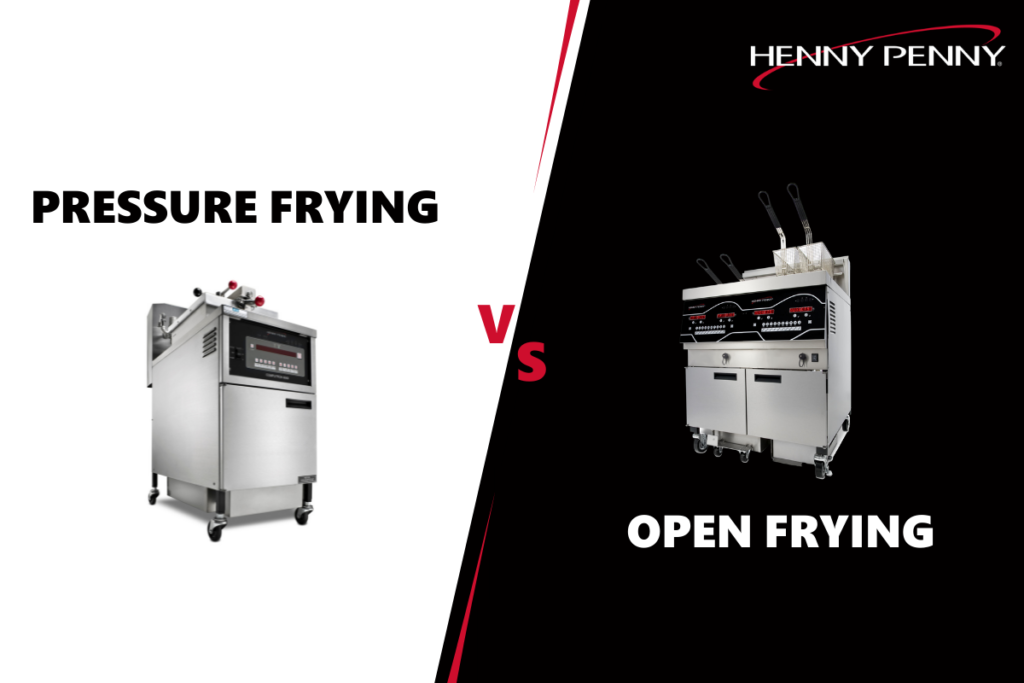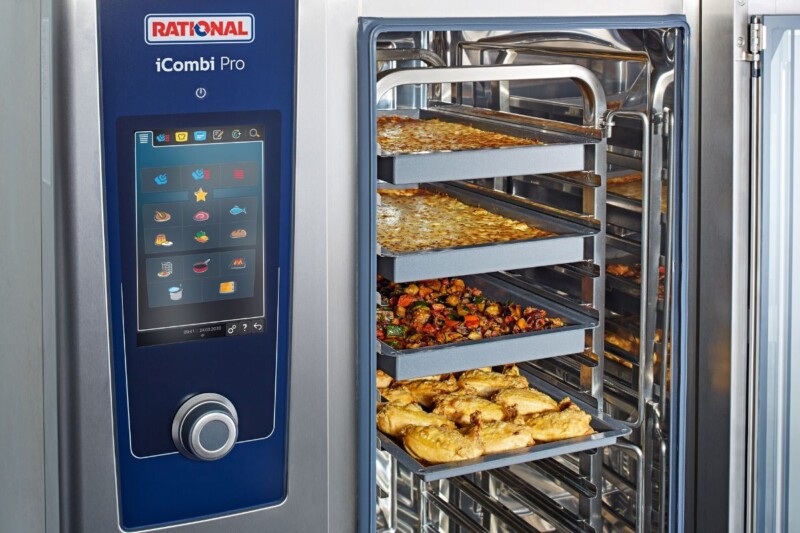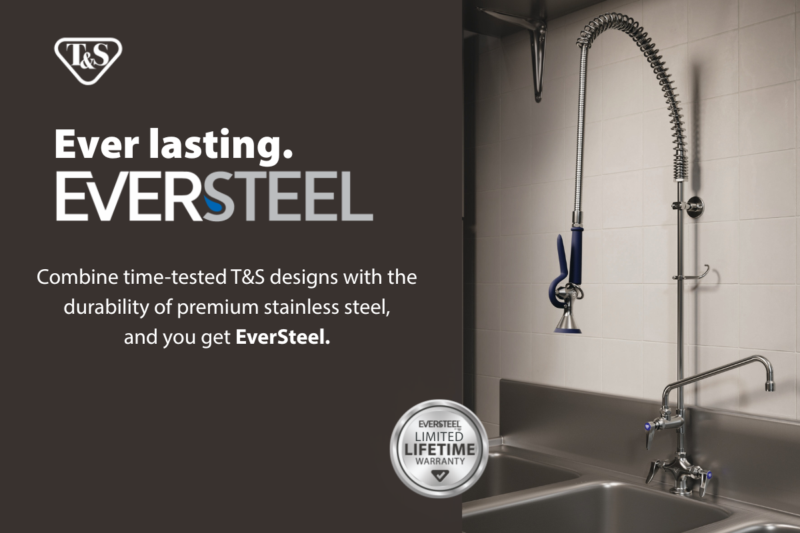SPONSORED CONTENT

There is almost nothing more rewarding than taking a restaurant concept from ideation to fruition. As a chef, helping operators navigate this journey is one of the highlights of my job. As an operator, investing in equipment for a new kitchen can be overwhelming with so much to consider.
Some of the earliest decisions to be made include ‘What’s on the menu?’, ‘How are we preparing the food?’, and probably most important – ‘Which equipment will produce consistent, quality product that makes us the first choice for customers?’.
Shopping for the right equipment can be GREAT (so many choices!!) and HARD (…so many choices…). The fryer is a critical piece of equipment that often throws operators for a loop and raises the subsequent question: ‘Open fryer or pressure fryer?’.
WHAT’S DIFFERENT?
Pressure frying raises the boiling point of water.
First, let’s talk pressure frying 101. Frying revolves around ‘water’ (aka the moisture inside of fresh or frozen product). The typical frying process, without pressure, can only cook to the boiling point of water which is 212 degrees. Pressure frying allows that moisture to boil at an even higher temperature, closer to 240 degrees.
By increasing the boiling point of water, less of the product’s moisture is lost while cooking. On top of that, frying under pressure – around 12 psi – enables lower oil temperatures than conventional open frying.
Pressure fryers produce a tastier, healthier product.
When it comes to frying proteins, be it bone-in chicken breasts, filet mignon or even salmon, there’s no substitute to the pressure fryer. Since less moisture is lost during the cooking process, the finished protein is extra juicy and superior in terms of flavor and tenderness.
And since pressure frying seals in natural flavors while sealing out excess oil, the product not only tastes better, but it’s healthier too!
Pressure frying shortens cook times.
The phrase ‘time is money’ holds especially true in commercial kitchens. Due to the increased boiling point of water, pressure fryers offer quicker cook times than their open counterparts.
Lower cooking temperatures, less moisture releasing from the product, and reduced exposure to air also create the perfect conditions for cleaner oil that lasts longer.
Open fryers produce a crispier, appetizing product.
I don’t want to come off as too partial to pressure fryers because open fryers are every bit as useful; even more so for cooking non-proteins.
Open fryers can be found in any kitchen used to cook fries, mozzarella sticks or onion rings — and for good reason. They’re efficient, versatile and turn out a tasty product.
Open fryers are easily configured to fit a kitchen’s unique needs.
Open fryers, particularly with more than one vat, allow more freedom for customization.
Split vats offer the flexibility to cook smaller batches of different items at once, with independent controls and completely separate cooking environments. In multi-well fryers, full and split vats can be mixed-and-matched depending on what the kitchen needs.
Open fryers are the Energizer Bunny of foodservice equipment.
Today’s open fryers can recover temperature in a matter of seconds, load after load. When combined with the ability to filter one vat while actively frying in the others, mealtime rush is a breeze.
WHAT’S SIMILAR?
Some menu items could go either way.
Menu items like fried chicken or potato wedges are commonly prepared in both types of fryers. One of the first things to consider when choosing between open and pressure frying is the desired end-result. Crispy? Juicy? Crunchy? Tender?
Some kitchens employ both fryers and offer two versions of the same product. For example, a pressure-fried chicken sandwich vs. a crispy chicken sandwich. The first is (obviously) pressure-fried and the second is open-fried to achieve a crispier, crunchier sandwich.
Don’t tell anyone, but you can open fry in a pressure fryer simply by keeping the lid open. This isn’t a best practice for high-volume kitchens of course, but it can be done.
Associated costs are comparable.
With both fryers, the actual cost of ownership is about the same. From sustainability to maintenance and labor, there isn’t much difference in cost from open fryers to pressure fryers. Even without an official Energy Star rating, pressure fryers save energy with quicker cook cycles and lower oil temperatures. However, Energy Star rated fryers offer the added bonus of rebate dollars depending on location.
Like any valuable asset, fryers must be taken care of to maximize their useful life. Be sure to ask about product warranties when shopping around. Aside from updating equipment to keep up with the latest and greatest technology, there’s no reason a fryer can’t last 10 or 15 years with proper care and maintenance.
Curious about frying options from Henny Penny?
Click here to learn more.
RELATED CONTENT
- Advertisement -
- Advertisement -
- Advertisement -
- Advertisement -
TRENDING NOW
- Advertisement -
- Advertisement -


